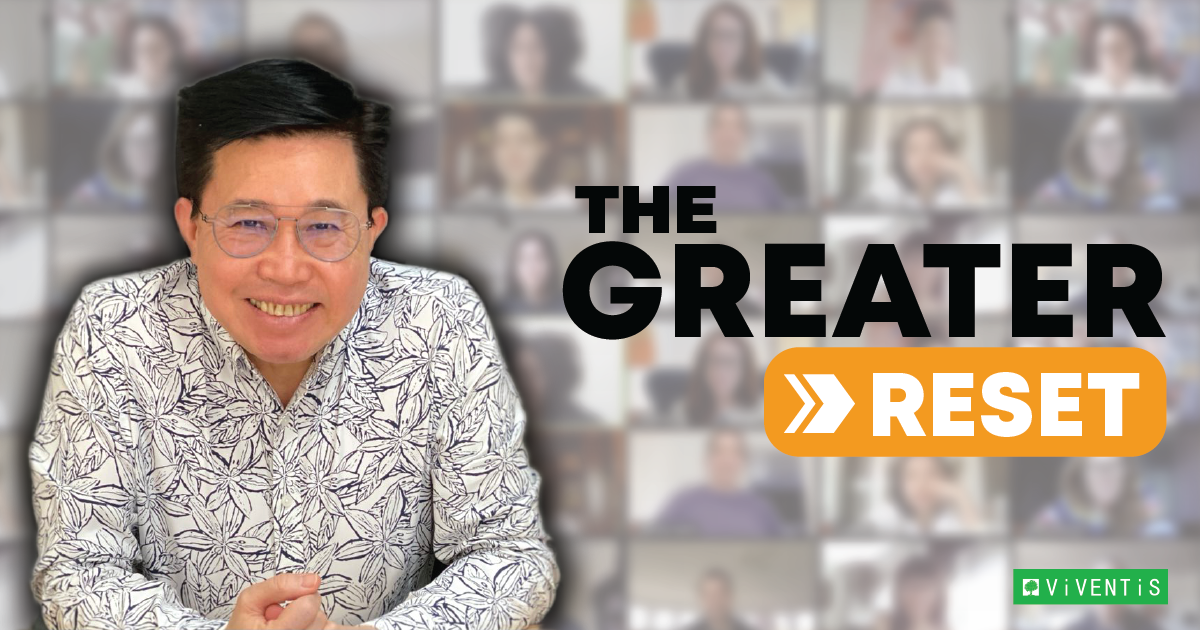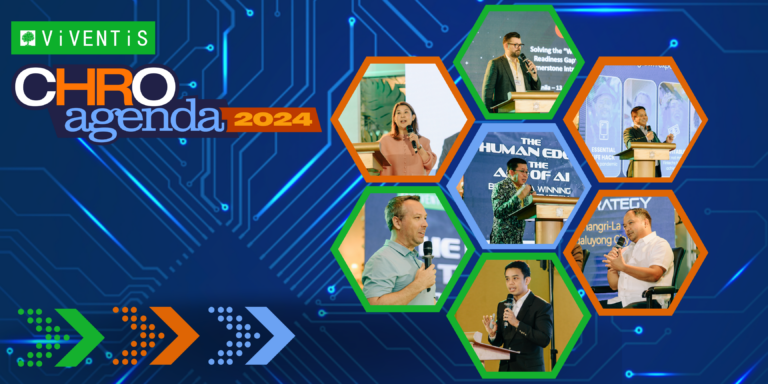Last year has greatly challenged humanity to the edge. It was a year full of lessons learned and introspection, which pushed Viventis to transform as a talent-first company. 2021 is a time of integration, optimization, and greater reset: taking action from what we’ve learned from the crisis and rebuilding the landscape for the new reality.

Given we’re still in the midst of a crisis, what does this mean for the future of work? Where is the HR industry going next? As HR practitioners, we take responsibility for spearheading the recovery phase of our organizations and ensuring our business is resilient enough to help us confront the next disruption. Beyond recruitment and hiring, we unleash our strategic ability to pivot and lead the organization towards the new normal.
HR’s role has greatly transformed from pre-pandemic times and digitalization is a huge part of this shift. So now we ask ourselves, how can we advance the future that is more practical, pragmatic, and efficient?
Referencing from my talk in one of our learning webinars, I highlighted key forces & trends that have impacted and will continue to shape the future of work. For 2021 and beyond that, here’s what I believe will remain relevant in the HR front – what you should start doing to prepare your organization for what’s next or continue pursuing to keep up with the current demand.

Remote working as the new normal
In a 2020 HR survey by Gartner, 88% of organizations around the globe encouraged or required employees to work from home due to the virus. By the end of 2021, Global Workplace Analytics predicts that 25% to 30% of the workforce will be working from home multiple days a week. Remote working is one of the major outcomes from the crisis, and without a doubt, it will be here to stay in the months and years to come.
What you should do: Most talents would start looking for organizations who are amenable to remote work and this is something that you take advantage of in your hiring strategy. It can provide flexibility while maintaining productivity and yield cost savings for both the talent and the employer.
Managing a complex, hybrid workforce & workplace
The adoption of the work from home setup has become the norm, even the businesses who have never offered this type of arrangement began to embrace it. This has provided beneficial results including increased productivity, improved employee satisfaction, lowered business costs, and reduced carbon footprint. Moving forward, a hybrid approach will emerge where some employees come to work onsite, and the rest will be working remotely.
What you should do: While not all industries can employ a fully remote setup, a hybrid approach might work for you. Evaluate which roles are appropriate for either of the arrangements. A hybrid setup can help employees gain a sense of normalcy by being in the office on some days and work at their own productive pace if working at home.
Continuous growth of the gig economy
Some workers who were displaced in the earlier stage of the pandemic might still struggle in looking for their next job. While full-time roles might be slim, others resort to offering their services on a freelance, flexible, or part-time basis. The crisis has triggered a great shift towards the gig economy as both workers and employers greatly benefit from this model. For the workers, they have jobs that they can do anywhere at their own time. For the employers, hiring gig workers can help scale up operations exponentially while optimizing operational costs.
What you should do: If you need talent for short-term or project-based contracts, tapping gig workers might be a viable option so you can tremendously save time, energy, and resources.
Acceleration of digital transformation in the workplace
Digitalization and automation will be the way to go – where organizations will further leverage new technologies in every part of the business process. Technology will remain to have stronger ownership especially in the recruitment process. As Josh Bersin puts it, HR leaders are adopting digital tools faster and are creating technology “mashups” from recruiting to onboarding, communications and performance management, training and development. With technology at our disposal, it can bring a positive impact to people and operations.
What you should do: Prioritizing the use of Artificial Intelligence and automation in your process can make the work of managers more efficient and empower the employees at the same time. An array of tools, platforms, and solutions are available that can help you kickstart your HR digital transformation.
Demand for reskilling, upskilling, and career development support
One of the consequences of the pandemic is the widening of the skills gaps. With the environment shift, this created new jobs or roles which require new skills as well. The need for reskilling, retraining, and upskilling talents then becomes the most important agenda across the organization. When you give emphasis on the development of your talents, you help them seamlessly navigate the changing landscape armed with the most critical skills for them to thrive.
What you should do: A robust and sustainable L&D strategy will be essential to support your employees acquire the skills they need for now and the future. Whether you start with choosing between an LMS or LXP or deciding on what type of training to provide, our Talent Development experts can help you strategize what works best for your business objectives.
Employer support for employees’ overall well-being
Employers play a key role in promoting and improving the overall well-being of employees. The significance of this role further increased at the onset of the pandemic, where employers make more effort to support their employees’ financial, physical, and mental well-being. If employers give importance to employee well-being, it will become an essential driver to ensure productivity and stability within the organization.
What you should do: Show empathy and take time to talk to your employees in a personal capacity – ask them how they’re doing, what they’re feeling, and extend any support they need. A good way to boost employee well-being is by creating initiatives that matter; may it be adjusted work hours, enhanced sick leave, or sending care packages that can uplift their spirits.
Emphasizing diversity and inclusion
Diversity and inclusion in the workplace is more than just a hot topic, it is a concept that must be practiced across organizations. Aside from building a balanced and diverse workforce, it is crucial to create a culture of inclusiveness – recognizing your employees as people and not just workers, establishing a sense of belongingness across the organization, and celebrating their differences for them to become more engaged and productive.
What you should do: Improve employee engagement and trust by integrating diversity and inclusion into your current strategy. Having an inclusive workplace can positively help employees become more engaged in their work leading to high morale and retention. Moreover, this can help instill greater trust between the employees and leaders.
Designing an agile and resilient organization
With organizations in the process of recovery, redesigning the organization may require an overhaul of roles, processes, and workflows to increase efficiency. If you will only focus on efficiency, it can make your organization vulnerable to disruption. Beyond improving for efficiency, you should redesign the organization for resilience so you are able to sense and respond to change quickly, repeatedly, and at scale.
What you should do: Re-evaluate your organization on how it fares in being responsive, adaptive, and flexible to change. A good start can be the prioritization of building critical skills & competencies for your people or thinking of new ways on how to design work to be able to adapt to the changing needs of your customers or clients.
Changing leadership and management competencies
As things continue to change at every turn, it’s not only processes or employees that need to adapt but this includes the leadership as well. Leaders are urged to pursue competencies that go beyond influencing others and making decisions. In these very tough times, leaders must be more proactive, authentic, agile, and innovative to better lead their teams. The most relevant competency that a leader should possess is ‘grislience’ – seeing challenges as opportunities, harnessing adversity, and refusing to just survive but thrive and be successful despite the uncertainty.
What you should do: It’s good to stick to tried-and-true leadership skills, but learn how to pivot and reassess your capabilities so you can be more adaptive and dynamic in order to achieve wins and reach your most compelling goals.
Encouraging a culture of trust, transparency, and openness
Even if working remotely has become our new routine, it allowed us to form closer bonds with the people we work with. As teams become more adaptive, it is vital to leverage on effective management by forging trust, transparency, and openness within the organization. Businesses who value transparency are bound to have happy and highly engaged employees, which will lead to a trustworthy relationship between employees and leadership.
What you should do: Engage in crucial conversations with your people and ensure open lines of communication at all times. Listen to what your employees or stakeholders have to say, reinforce the practice of mindful feedback, and empower your people so you can achieve your common purpose & goals together.
As you work on your reset strategies, these forces and trends will serve as a guide to help you navigate the future of work. Notice that people remain to be the foundation for these trends, as it is the most important asset for your organization. Old processes are no longer needed as new rules will be rewritten in terms of economic value, work engagement, and people management. With the pandemic as a rude awakening for most, the need to probe and understand the next steps to be taken can help you ensure the right code for the future.
Want to learn more on how you can achieve business sustainability, viability, and success in HR and beyond? Connect with the Viventis team today so we can help you transform your business and thrive in the future of work:
{{cta(‘6afbb2eb-5d9c-4f57-8cd6-f633e0e425fa’)}}

